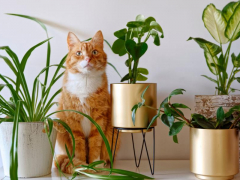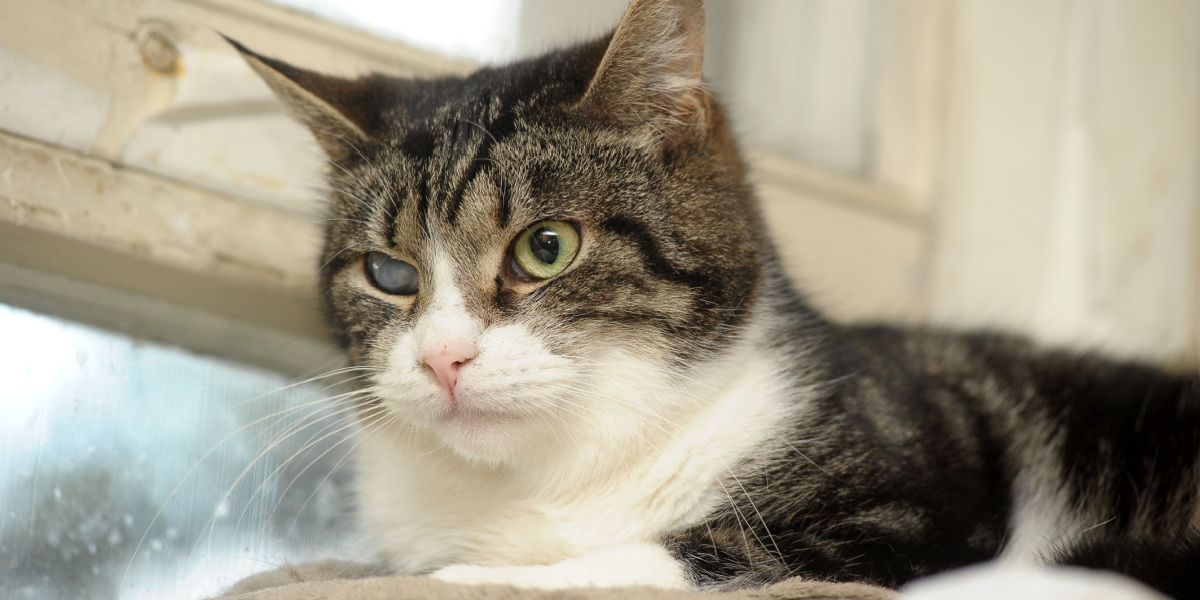
Anna Krivitskaya / Shutterstock.com
Eyes are sensitive structures – and we all know the distress that we feel if we have a painful eye. Cats are no different, and painful, diseased or injured eyes can swiftly deteriorate, so seeking veterinary advice is important.
Cats can get a variety of eye problems, from conjunctivitis to blindness. This article aims to explain more details about the common eye problems in cats.
Common Symptoms of Eye Problems in Cats
If your cat has an eye problem, the most obvious clue is that one, or both eyes, do not look “normal”.
A cat’s eyes should be wide open, with little blinking, and no discharge from the corner of the eyes. The surface of the eyes should be bright, clear and free of blemishes, and the whites of the eyes should not have a reddened colour. The pupils of left and right eyes should look similar in size and shape.
The main symptoms of eye problems include the following:
- Squinting: where one or both eyes are kept half (or fully) closed.
- Swelling: the lining of the eye or the eyelids can swell, preventing you from seeing the eyeball.
- Redness: the white of the eye may appear reddened.
- Discharge: this may be from one or both eyes. The discharge can be watery and clear, or yellowy green. It can be seen around the eye, or down the front of the face from the inner corner of the eye.
- Rubbing: the cat may be rubbing at the eye with their paw, or rubbing their head along the ground.
- Third eyelid: this may be protruding from the corner of the eyes.
- Abnormal pupils: either dilated, or pinpoint, or sometimes one eye’s pupil may just look very different to the other.
- Signs of blindness: these can include disorientation, bumping into objects and failure to find things such as litter box or food.
Common Eye Problems in Cats
Some eye disorders are much more common than others in cats, and eye conditions can vary in severity and consequence. Here’s some of the most common ocular problems in cats and how to spot them.
1. Conjunctivitis
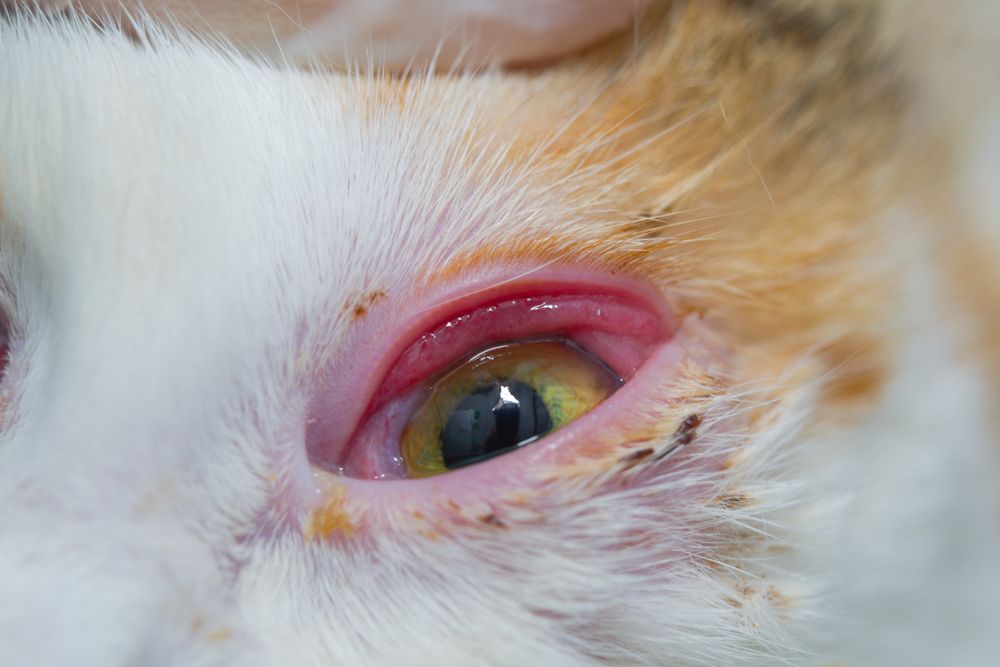
Todorean-Gabriel / Shutterstock.com
Conjunctivitis is defined as inflammation of the conjunctiva, which is the protective layer of transparent tissue that covers the entire eye, and the inside of the eyelids. The conjunctiva is the first line of defence for the eyes, so if the eye is in contact with anything irritating (chemicals, pollens, viruses such as feline herpesvirus, bacteria etc), conjunctivitis is a common result.
The eyes look reddened, there may be visible swelling of the fleshy lining of the eye, the cat may rub their head along the ground, or rub their eyes with their paws, and there may be a yellow or green discharge.
2. Keratitis or Corneal Ulceration
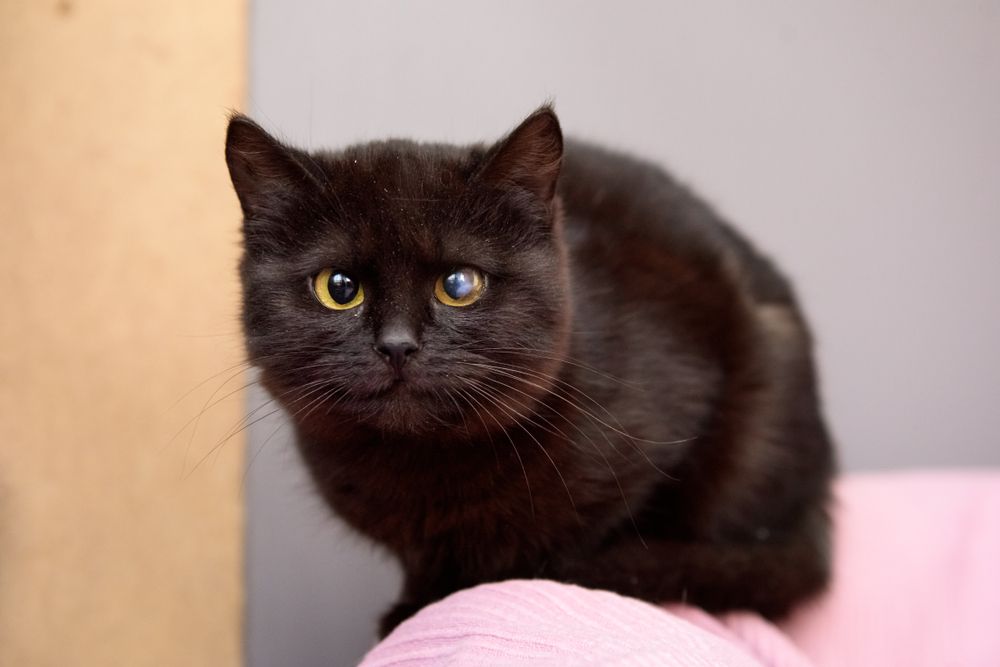
Natalia_Arefieva / Shutterstock.com
Beneath the conjunctiva, the next layer of the eye is known as the “cornea”, which is the surface of the eyeball itself: inflammation of the cornea is known as “keratitis”. This is often seen as a blemish on the front of the eyeball itself: there may be cloudiness, or pigmentation.
If the cornea has been more severely damaged, this can create a small crater-like area, known as a corneal ulcer (or so-called “ulcerative keratitis”). This can be very painful and requires urgent treatment. A cat with a corneal ulcer may have the affected eye closed, and may refuse to allow you to examine their eye because of the pain. This situation requires urgent veterinary intervention.
3. Keratoconjunctivitis
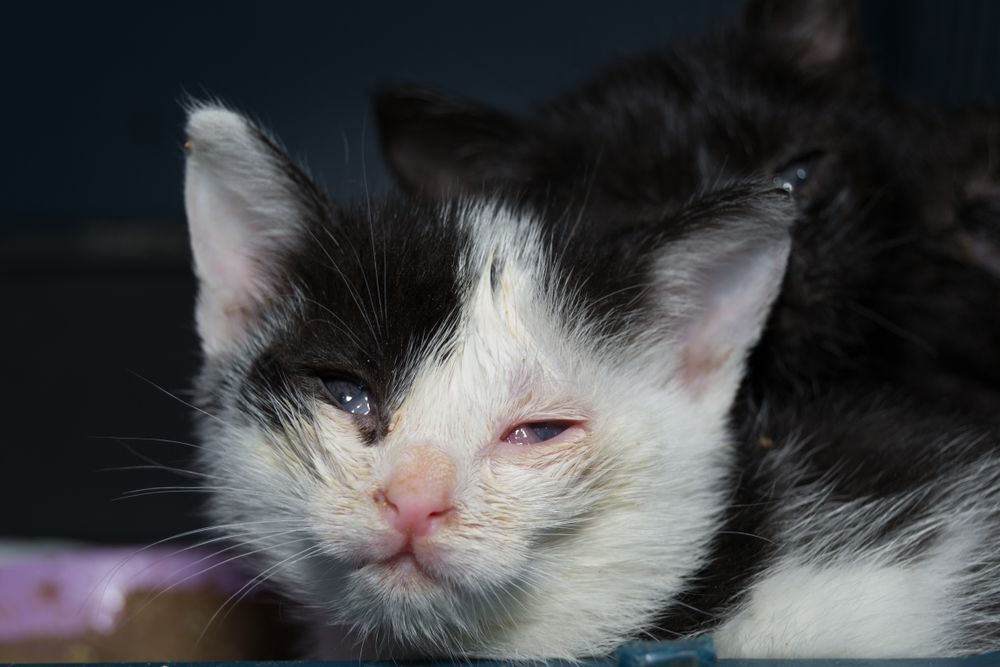
Todorean-Gabriel / Shutterstock.com
Often, both the conjunctiva and the cornea are inflamed at the same time: this is known as keratoconjunctivitis. The signs listed above, of conjunctivitis and keratitis, are seen at the same time.
When people talk about a cat’s eye infection, they normally mean conjunctivitis or keratoconjunctivitis. There are four infectious organisms that are the most common causes of conjunctivitis and keratoconjunctivitis in cats: two bacteria (Chlamydia and Mycoplasma species), and two viruses: feline calicivirus (FCV) and feline herpes virus (FHV) also known as feline viral rhinotracheitis.
It’s important to have a veterinarian examine any cat with keratoconjunctivitis, so that the best treatment can be given.
4. Uveitis
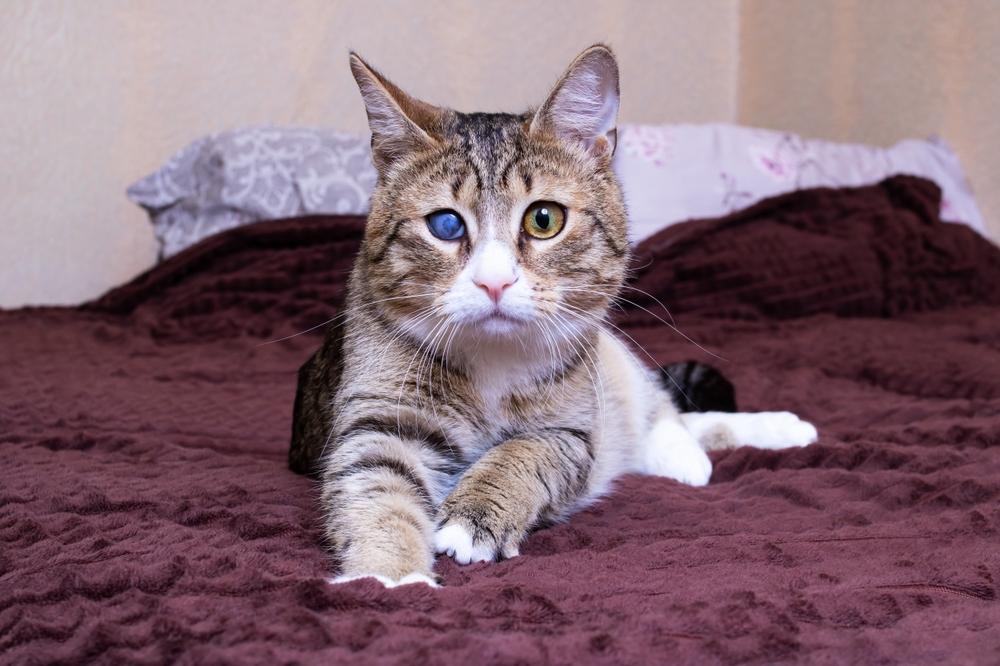
Vera Aksionava / Shutterstock.com
The pupil of the eye (the black hole in the center) is a shape that is created by the iris, a muscular sheet that widens (dilates) in low light, and narrows (contracts) in bright light. The iris is also known as the uveal tract, and if this becomes inflamed, this is known as uveitis.
The pupil becomes more constricted (smaller), the pupil may turn a reddish-brown color, and the front of the eye may appear cloudy. Complications include the risk of glaucoma, caused by the accumulation of excess fluid inside the eye due to the inflammation, which may lead to blindness or even the loss of an eye.
Possible causes of uveitis include viral diseases such as feline leukemia virus (FeLV), feline immunodeficiency virus (FIV) or feline infectious peritonitis (FIP).
5. Physical Trauma to the Eye
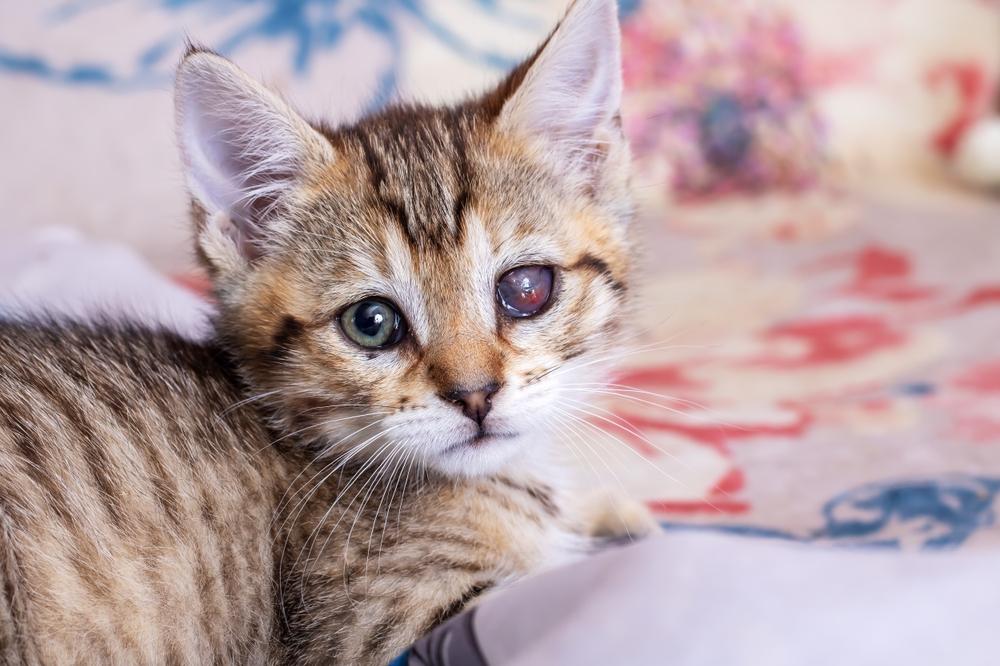
Vera Aksionava / Shutterstock.com
Cats’ eyes can be physically damaged by many situations, from cat scratches to fights with other animals to road traffic accidents. A small foreign body, such as a grass seed, may cause damage if this becomes stuck in the eye (e.g. behind the eyelids).
Physical damage can be mild (e.g. just conjunctivitis), medium (e.g. corneal ulcers) or severe (e.g. a ruptured eyeball, or a prolapsed eyeball).
If there is just mild trauma (e.g. a slightly inflamed eye which the cat can still open normally) then a simple approach of bathing the eye with mildly salty water and allowing some time to pass may suffice. If the trauma is more serious (e.g. the eye is completely closed, or if there is obvious physical damage) then an urgent visit to the vet is needed.
6. Prolapsed Third Eyelids: Haws Syndrome
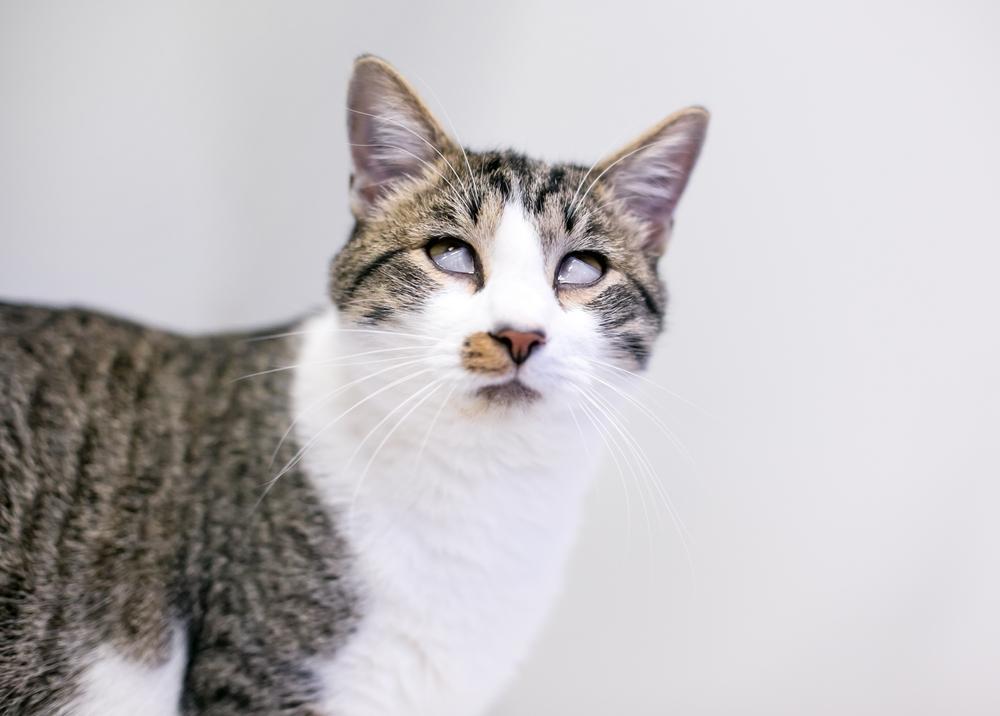
Mary Swift / Shutterstock.com
Cats, like most animals, have an extra set of eyelids that are located on the inner corner of each eye. These are known as ‘third eyelids’: they move across the eyeball like a windscreen wiper whenever an animal blinks. Normally, the third eyelids remain hidden, but in Haws Syndrome, the third eyelids can be seen protruding from the inner corners of both eyes. Cats with this condition are perfectly healthy in every other way.
There are several possible causes. It could be a side effect of gastro-intestinal disease, the cat may have worms, or a mild virus known as a Torovirus may be involved.
Most cases of Haws Syndrome are self-limiting: they get better by themselves, usually after two or three weeks. As long as a cat continues to be healthy, hungry and happy, there’s no need for treatment.
7. Blepharitis
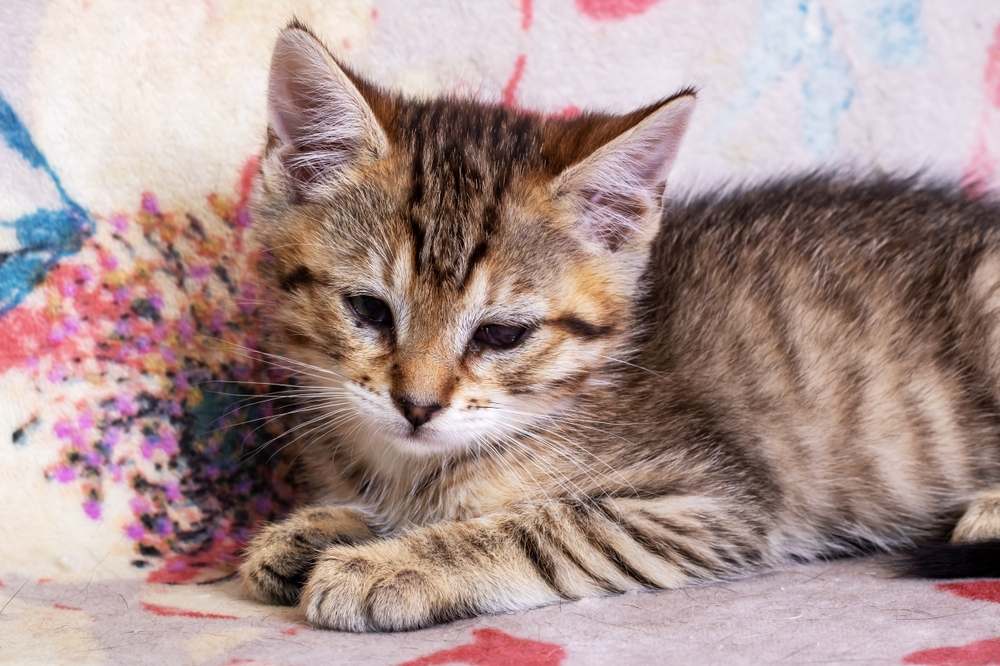
Vera Aksionava / Shutterstock.com
Blepharitis means inflammation of the eyelids, causing them to look swollen and sore. There are many possible causes, including eye injuries and secondary bacterial infection following viral infections. A detailed veterinary examination is recommended.
8. Blocked Tear Ducts and Tear Overflow
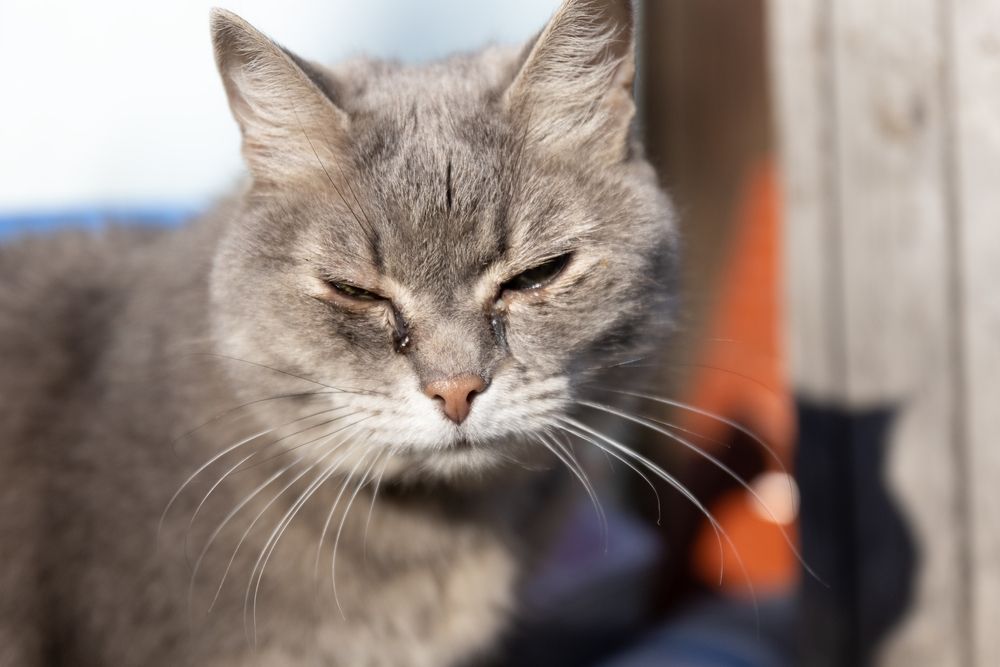
AI.geba / Shutterstock.com
Normally, tears are produced by tear glands around the eye, and after lubricating the surface of the eye, they exit through tear ducts and then out through the nose. If the tear ducts are blocked, it is common for tears to spill down the front of the cat’s face, from the corners of the eyes. This is more commonly seen in flat-faced breeds such as Persians.
9. Blindness
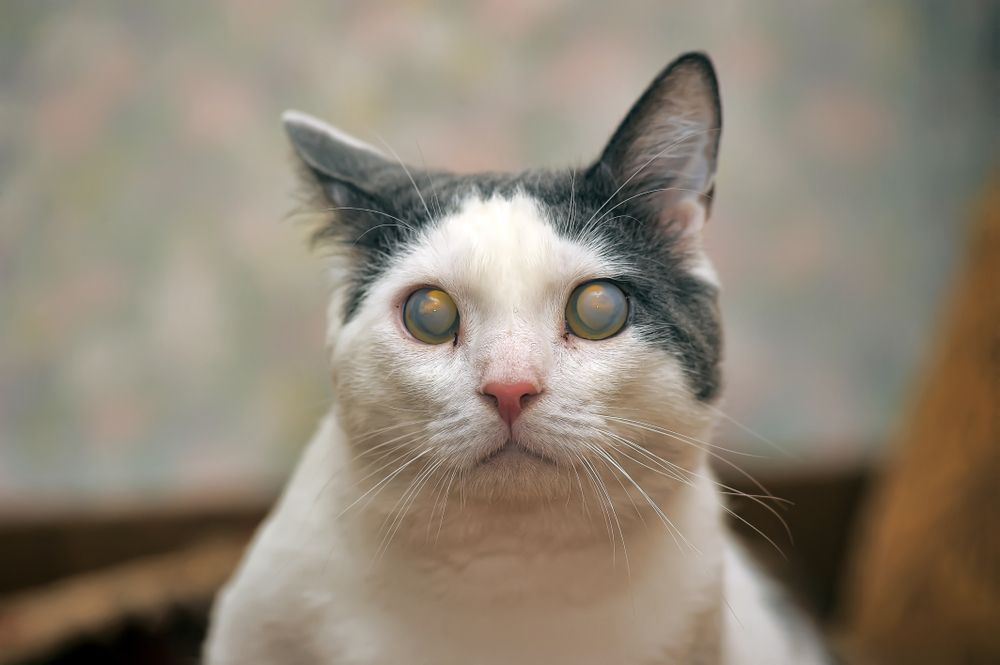
Anna Krivitskaya / Shutterstock.com
Vision is important to cats, and blindness is a serious problem. This can develop gradually and imperceptibly, in which case cats are sometimes able to adapt to their new situation, or it can happen suddenly (e.g. due to a bleed at the back of the eye caused by high blood pressure).
It can be difficult to assess blindness in a cat: you may notice that both pupils are dilated (the pupils are bigger and the eyes appear blacker than normal), or that your cat may not notice objects or a waving hand in front of their face. An urgent veterinary assessment should be carried out if you suspect that your cat has visual abnormalities.
A detailed examination of your cat’s eyes first by your primary veterinarian, and then often by a veterinary ophthalmologist is needed to investigate the blindness, with detailed scrutiny of the retina and the optic nerve, checking for problems such as retinal detachment. Treatment depends on the cause, and may or may not be possible.
10. Cataracts
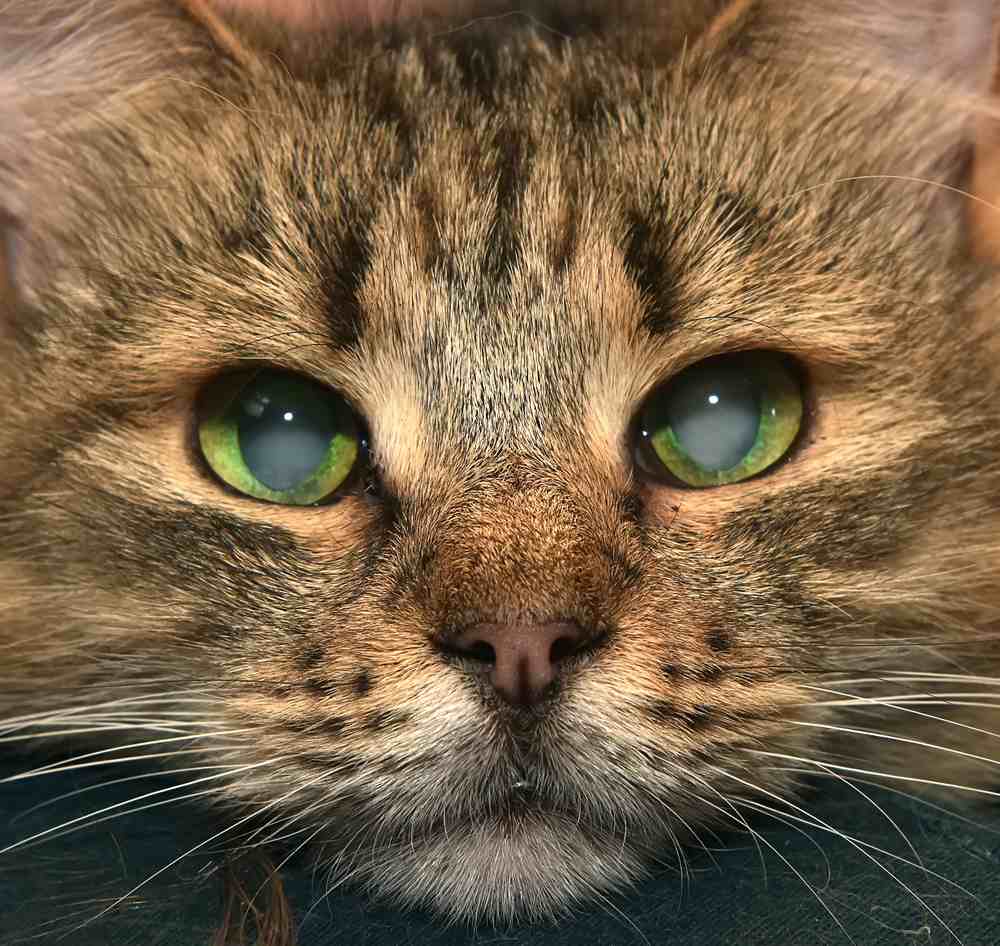
Anna Krivitskaya / Shutterstock.com
A cataract describes when the lens in the center of the eye degenerates, changing from the normal transparent structure to an opaque, milky-white color. A cataract causes a physical obstruction to the passage of light to the back of the eye, resulting in partial or total blindness.
Cataracts can be a hereditary issue: some breeds, including Birman, Persian and Himalayans, are more likely to develop cataracts. There are other possible causes (including uveitis). Cataracts can be treated by surgical removal, although this is a specialized operation, only carried out by veterinary ophthalmologists.
11. Intraocular Neoplasia (Cancer)
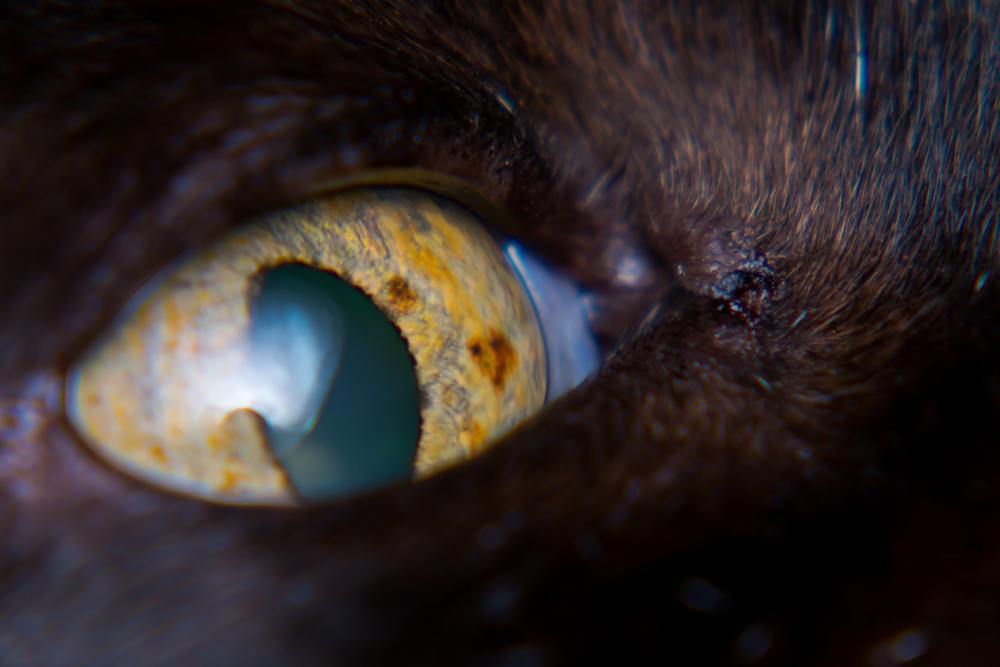
Todorean-Gabriel / Shutterstock.com
Various types of neoplasia (cancer) can affect the eye: the iris is the area most commonly affected. Brown or black spots which grow bigger may be caused by melanoma, and lymphoma can cause the iris to become thickened and irregular, causing a misshapen pupil. With such serious eye disorders, a referral to a veterinary ophthalmologist is often recommended.
How to Care For Cats’ Eyes
Healthy cats do not usually need to have any attention given to their eyes, other than monitoring them to ensure that they remain looking healthy.
If a cat has a mild eye problem, simple home treatment may be given. First aid for a suspected eye infection involves a pet owner bathing the eye twice daily in mildly salty water. Add a teaspoonful of salt to a pint (450ml) of boiled water, which is then cooled down before use. Moisten a ball of cotton wool with this solution, and apply this gently to the cat’s eye, soaking the discharge to make it easier to wipe off. Repeat this every few hours.
If the eye condition is not back to normal after twenty four hours of this treatment, you should take your cat to your local DVM veterinarian. Your vet can examine the eye using special veterinary equipment such as an ophthalmoscope, a tear test, special dyes and local anesthetic drops. Treatments for eye conditions often involve medicated eye drops, although sometimes oral medication is needed as well.
Also Read: Cat Eye Infections: Causes, Symptoms, & Treatment



